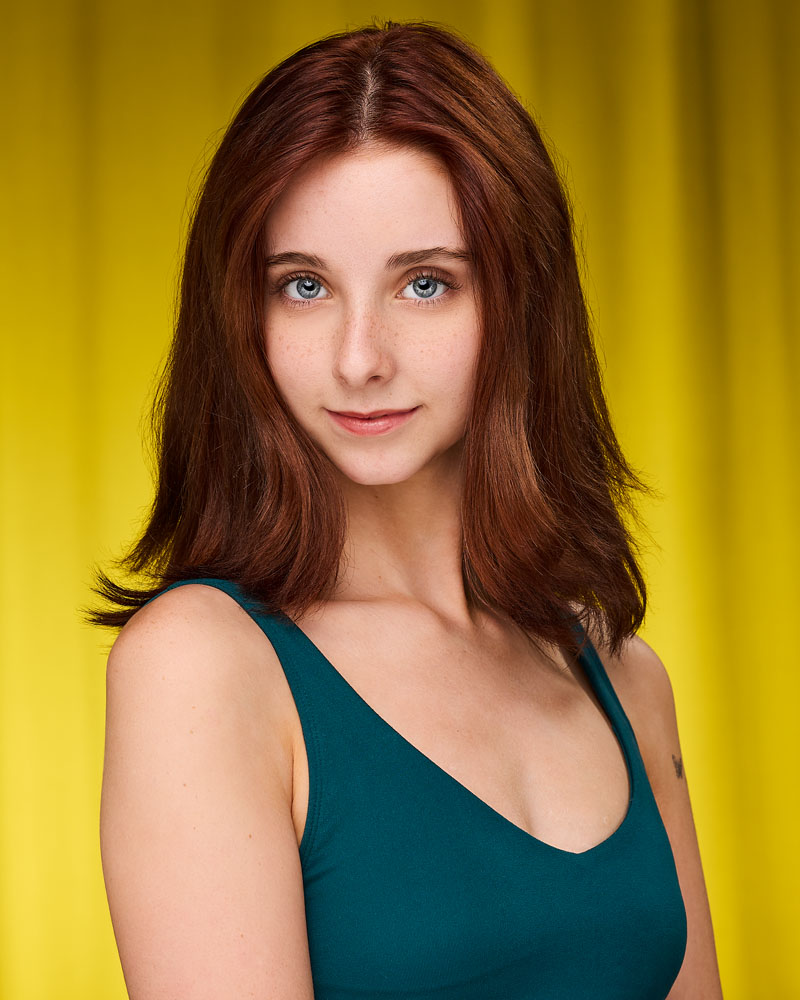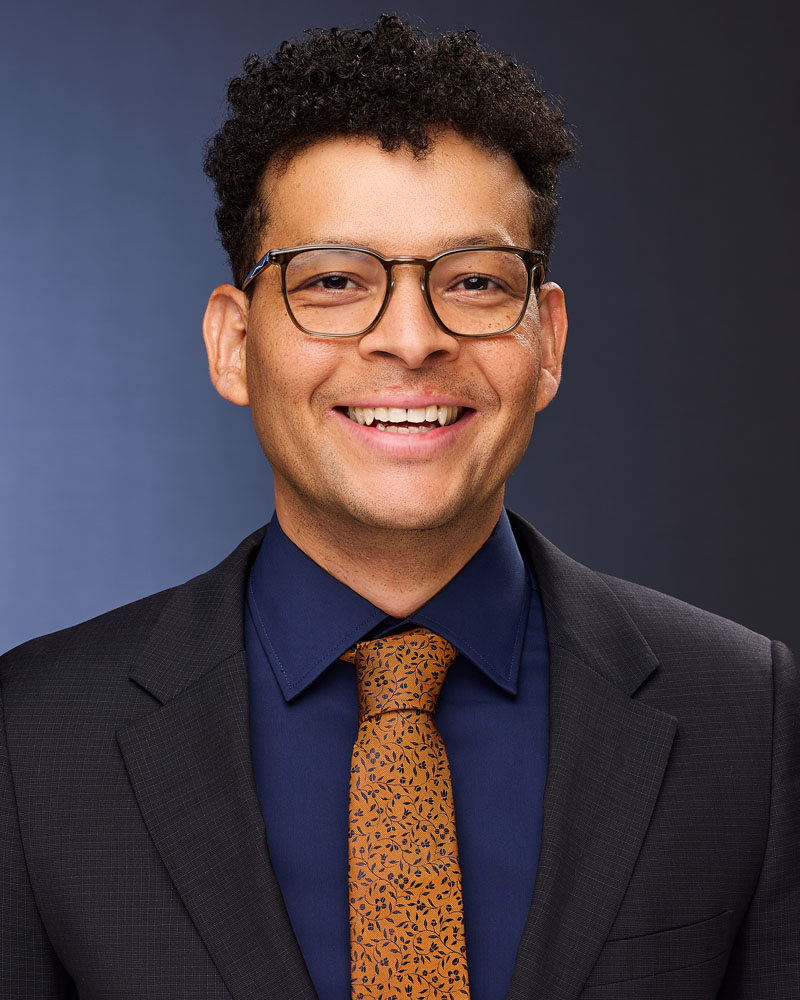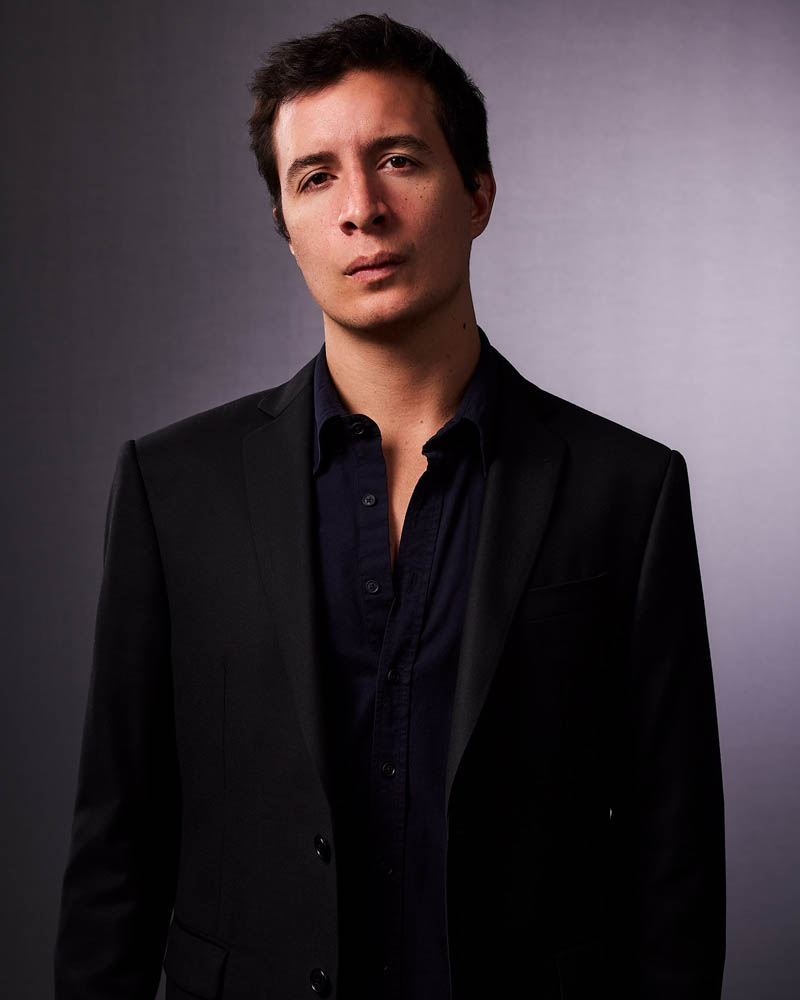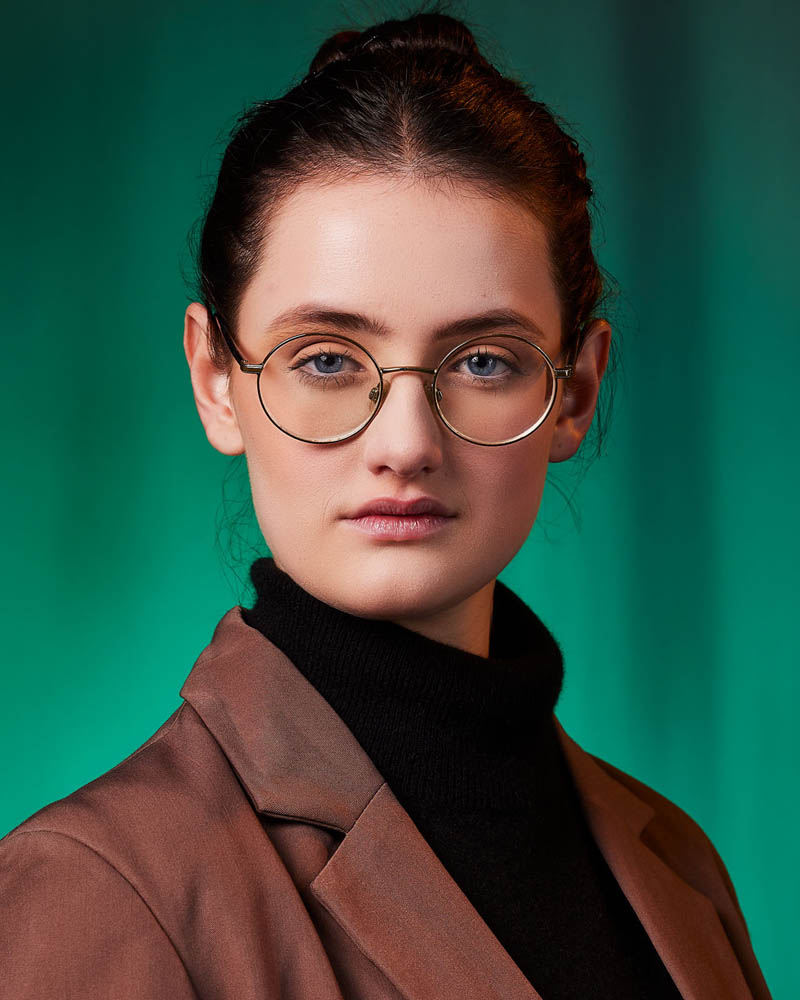An Overly Distracting Background
Now let’s say you’re working with a real photographer. There are still other factors that can make for a poor headshot. One is a distracting background. There are a lot of ways a background can be distracting. In a studio, it can be something that is just too busy. But busy is a relevant term to the headshot goal.
In a general business headshot, less is more. This does not mean get a white background like a passport photo. It just means that usually a simple solid natural color or gradient color goes a long way toward keeping the focus on your face, which is the main goal of a headshot. If you’re getting your headshot made outdoors, trying to keep simple backgrounds can be a bit more difficult. This is why some photographers will create bokeh backgrounds. But usually avoid other things like tree branches behind you that make it appear as though it is coming out of your ear, or another person passing behind you, and so on.
For some of the best acting headshots a little bit more planning is required for the background. In an actor headshot, the background can be used to help tell a story. An actor headshot generally is going after two looks – a commercial look and theatrical look. A commercial look is generally a highly approachable cheerful vibe while a theatrical look is more along a serious or dramatic vibe.
So, as an example, a theatrical look actor headshot might use dark colors to complement the fact the actor is wearing a leather jacket for a particular look. But things can start to go sideways if there is too much going on in the background, like overuse of props, or art that is extremely abstract.
Anything in the Shot That Distracts from Your Face
Speaking of props, there are items that can sometimes be overdone in a headshot. For example, if you are a doctor and your headshot is going to be alongside page content that is specifically about you being a doctor, then perhaps adding a stethoscope in addition to a lab coat is not needed. At the same time, an actor trying to get a character headshot portraying they can play a doctor might not be overdoing it. Find balance.
Another easy way to add distractions is in overdoing accessories like jewelry, scarves, hats, and so on. It’s not that you should not add these, just make sure they are not calling attention away from your face. If it becomes a topic of conversation, it probably needs to go.
Not Preparing for What You Want from Your Headshot
Some people show up to a headshot session without a plan. A good photographer can save the day, but you will be better served if you have some thoughts about what you want from your headshot. If you don’t have a plan, you might end up with a headshot that is a misfit.
For example, if your job told you to get a headshot and you got one with a navy blue background. Then you saw it posted alongside the rest of the team who all have some shade of gray. Maybe that yours stands out will work out for you or maybe not. But maybe instead check out things like this ahead of time so you not forced to figure it out after the fact.
Figuring out what you want from your headshot also includes what vibe you want it to send, like approachable, serious, confident, trusting, etc. There are outfit and color considerations that play a role in creating this message for your headshot.
And now for what makes a good headshot…
There are four things that contribute to making a good headshot and a fifth that is a wild card that can make a headshot go from good to great. The catch with these is that the four are required for a good headshot. If they are all part of the element, the finished product will clearly and easily stand apart from anything else attempting to be a headshot. But the fifth is next level.






